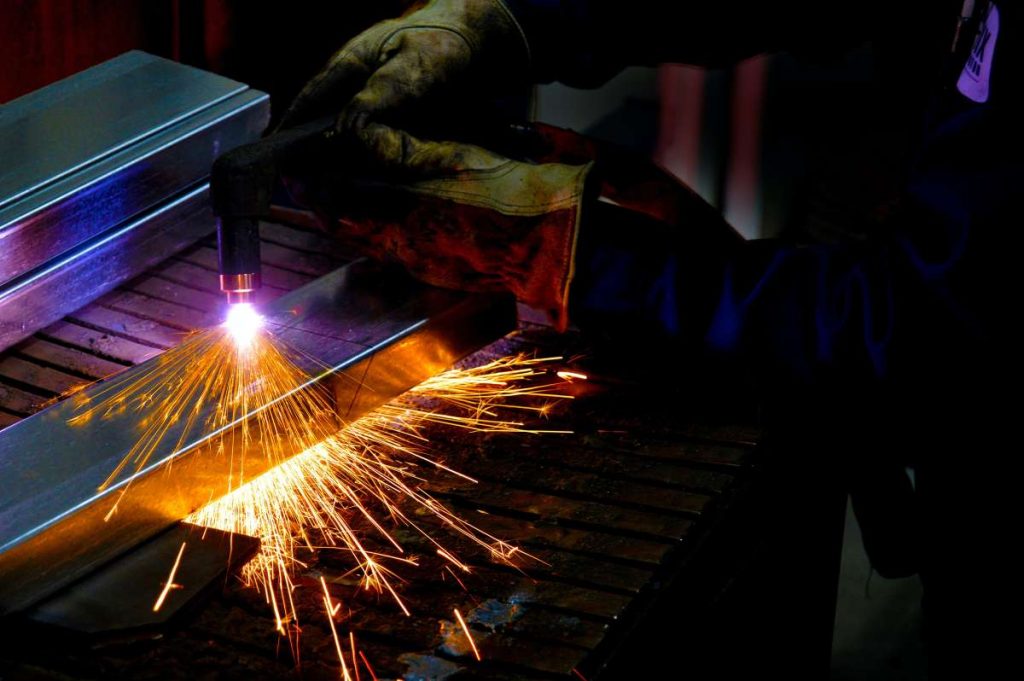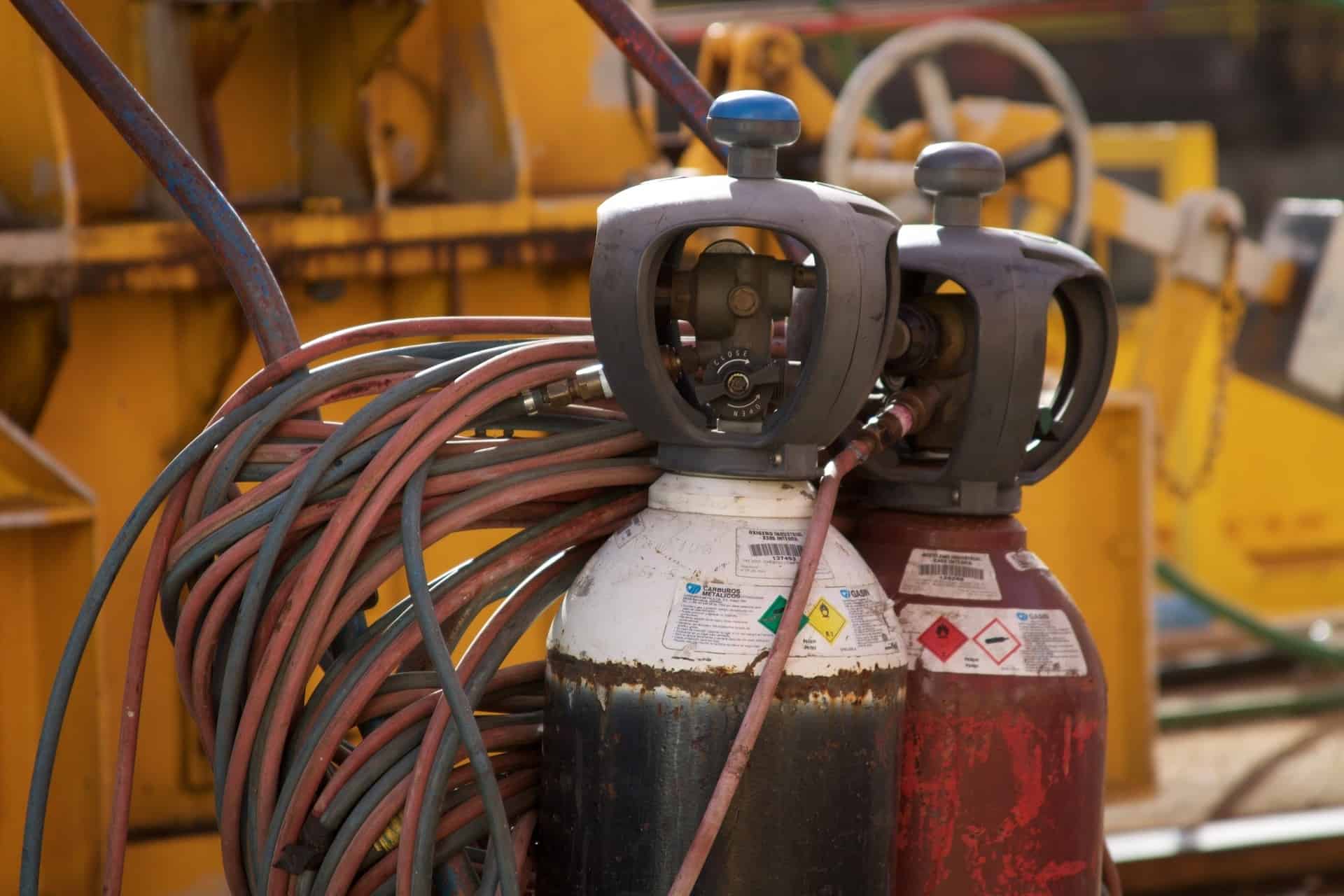Welding is crucial in various industries, from construction and automotive to aerospace and manufacturing. Choosing the right welding method ensures the finished product’s strength, durability, and appearance.
With multiple welding techniques available, selecting the best method for your project can be challenging. Each welding technique has its strengths, weaknesses, and applications.
This article will delve into four of the most commonly used welding methods, providing insights to help you make an informed decision.
Let’s get straight to the point.
This article overviews four common welding methods: MIG, Flux-Cored, TIG, and Stick welding. Each method has advantages and disadvantages, making it suitable for different materials, environments, and skill levels.
MIG welding is easy to learn and fast but is sensitive to wind, while Flux-Cored welding is better for outdoor use and heavy-duty applications. TIG welding offers high precision and clean welds but is slower and more skill-intensive.
Stick welding is versatile and cost-effective, particularly for outdoor work, but requires more cleanup and is slower. The right method depends on the material, environment, skill level, and budget to ensure quality and efficiency in welding projects.
Gas Metal Arc Welding (MIG)
What Is MIG Welding?
Gas Metal Arc Welding (GMAW), known as MIG welding, is one of the most popular techniques. It involves feeding a continuous solid wire electrode through a welding gun into the weld pool.
A shielding gas, typically a mix of argon and carbon dioxide, protects the weld from air contaminants.
Advantages Of MIG Welding
MIG welding is favoured for several reasons:
- Ease of Use: MIG welding is often considered the easiest welding method to learn, making it ideal for beginners.
- Versatility: It works well with various metals, including carbon steel, aluminium, and stainless steel.
- Speed: This method allows fast welding, which is particularly beneficial in large-scale construction and fabrication projects.
- Clean Welds: Shielding gas reduces the amount of slag and spatter, resulting in cleaner welds that require less post-weld cleaning.
Disadvantages Of MIG Welding
Despite its advantages, MIG welding has some limitations:
- Equipment Costs: The initial setup for MIG welding can be expensive due to the need for a wire feeder, shielding gas, and other specialised equipment.
- Sensitivity to Wind: Wind can blow away the shielding gas, making MIG welding less effective in outdoor or draughty environments.
When To Use MIG Welding
MIG welding is ideal for projects requiring high-speed production and clean welds. It’s commonly used in automotive repair, metal fabrication, and the manufacturing of various consumer goods.

Flux-Cored Arc Welding (FCAW)
What is Flux-Cored Welding?
Flux-Cored Arc Welding (FCAW) is similar to MIG welding but uses a different electrode type. Instead of a solid wire, flux-cored welding utilises a hollow wire filled with flux.
This flux provides the necessary shielding, eliminating the need for an external gas supply in some cases.
Advantages Of Flux-Cored Welding
Flux-cored welding offers several benefits:
- Outdoor Use: Unlike MIG welding, flux-cored welding is less affected by wind, making it suitable for outdoor work.
- Deep Penetration: This method allows for deeper penetration, crucial for welding thicker materials.
- High Deposition Rate: More metal is deposited during welding, which benefits heavy-duty applications like structural steel welding.
Disadvantages Of Flux-Cored Welding
Some of the downsides include:
- Higher Cost: Flux-cored wires can be more expensive than solid wires used in MIG welding.
- Increased Spatter: While flux-cored welding produces deep welds, it generates more spatter, which may require additional cleaning.
When To Use Flux-Cored Welding
Flux-cored welding is ideal for heavy-duty, outdoor applications where deep penetration is necessary. It’s commonly used in construction, shipbuilding, and heavy equipment manufacturing.
Gas Tungsten Arc Welding (TIG)
What Is TIG Welding?
Gas Tungsten Arc Welding (GTAW), or TIG welding, uses a non-consumable tungsten electrode to produce the weld.
A shielding gas, usually argon, protects the weld from contamination. TIG welding is renowned for its precision and ability to produce high-quality welds.
Advantages Of TIG Welding
TIG welding offers several key advantages:
- Precision: TIG welding allows precise control over the weld, making it ideal for delicate and detailed work.
- Versatility: This method can be used on various materials, including steel, aluminium, and exotic metals like titanium.
- High-Quality Welds: TIG welding produces clean, aesthetically pleasing welds with minimal spatter and no flux residue.
Disadvantages Of TIG Welding
However, TIG welding also has some drawbacks:
- Skill Requirement: TIG welding is more challenging and requires a higher skill level than MIG or flux-cored welding.
- Slower Process: It is generally slower than other welding methods, making it less suitable for high-production environments.
When To Use TIG Welding
TIG welding is the go-to method for projects requiring precision and high-quality welds. It’s commonly used in aerospace, automotive, and art metalwork, where aesthetics and weld integrity are paramount.
Shielded Metal Arc Welding (Stick Welding)
What Is Stick Welding?
Shielded Metal Arc Welding (SMAW), commonly called stick welding, uses a consumable electrode coated in flux.
As the electrode melts, the flux coating creates a shielding gas that protects the weld from atmospheric contamination.
Advantages Of Stick Welding
Stick welding is favoured in certain situations for its advantages:
- Versatility: This method can be used on various materials and positions, including overhead and vertical.
- Simplicity: Stick welding equipment is inexpensive, making it accessible to beginners and hobbyists.
- Outdoor Use: Stick welding performs well in outdoor and windy conditions since it doesn’t rely on an external shielding gas.
Disadvantages Of Stick Welding
However, stick welding also has its challenges:
- Slower Speed: Stick welding is slower than MIG and flux-cored welding, making it less efficient for large-scale projects.
- Clean-Up: The process produces slag that needs to be chipped away after welding, adding to the post-weld cleanup time.
When To Use Stick Welding
Stick welding is ideal for maintenance and repair outdoors or in remote locations. It’s also commonly used in construction, pipeline welding, and shipbuilding.
Factors To Consider When Choosing A Welding Method

Material Type
The type of material you’re working with is a significant factor in choosing the right welding method. Carbon steel is the most commonly welded material and works well with almost any welding process.
Stainless steel requires more control over the heat input to prevent warping, making TIG and MIG welding preferable. Due to its high thermal conductivity, aluminium often requires a specialised MIG welder with pulse capability.
Welding Environment
The environment where the welding takes place also plays a crucial role. MIG and TIG welding are better suited for indoor environments where wind is not a factor.
Due to their wind resistance, flux-cored and stick welding are more appropriate for outdoor or draughty conditions.
Required Skill Level
Your experience level should also influence your choice. MIG welding is generally the easiest to learn, making it ideal for beginners.
TIG welding, on the other hand, requires a higher skill level but offers the most precise and clean welds. Stick welding is somewhere in between and is often taught to beginners in vocational schools.
Budget Constraints
Budget is always a consideration. MIG and TIG welders can be more expensive upfront due to the need for additional equipment like shielding gas and wire feeders.
Stick welding is often the most cost-effective option for those just starting.
Conclusion
Selecting the best welding method for your project requires careful consideration of the material, environment, skill level, and budget. Each technique—MIG, flux-cored, TIG, or stick welding—has advantages and disadvantages.
Understanding these can help you make an informed decision that ensures the quality and efficiency of your work. Whether you’re a professional welder or a hobbyist, mastering the right technique for your application is crucial.
Top metal fabrication companies in Melbourne and other industrial hubs know that choosing the right welding method can be the difference between success and failure in any manufacturing environment. By selecting the proper technique, you can reduce time spent making, repairing, polishing, grinding, or discarding welds, ultimately leading to higher productivity and better results.
FAQs About Metal
What Should I Look For When Buying A Welder?
When choosing a welder for your shop, consider your amperage needs and the available power. While you may not need the most powerful machine, remember that you may run into welding projects that require more amperage or power or may want to weld aluminium in the future.
Is Stick Welding Stronger Than MIG?
When done correctly, stick welding produces stronger joins than MIG welding.
Why Would You Use A Stick Welder?
Stick welding has some unique benefits. It’s versatile and can weld metal alloys, including nickel, aluminium, copper, and ferrous metals like iron and steel. It also does not require shielding gas and is easy to perform outdoors and in windy conditions.
What Gas Do You Use For Stick Welding?
Argon or argon/helium mixtures can be used for welding in all grades. However, small additions of oxygen (O2) or carbon dioxide (CO2) are usually needed to stabilise the arc, improve the fluidity and improve the weld deposit quality.
How Far Should You Hold The Welding Rod Off Of The Metal?
As a good starting point, the arc length should be, at most, the diameter of the electrode’s metal portion (core). For example, a 1/8-inch 6010 electrode is held about 1/8 inch off the base material.

